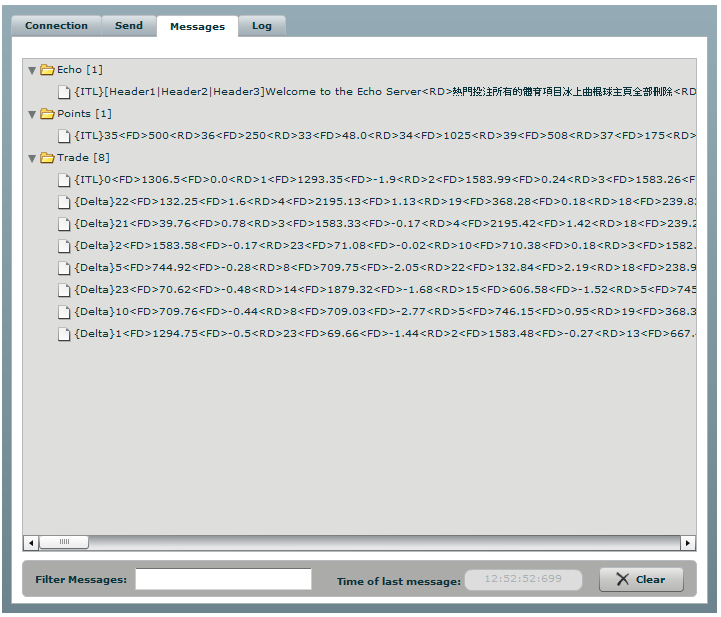DEPRECATED: Flex/Flash® client
The Flex® client test tool is a Flex application that uses the diffusion-flex.swc library. The tool can be found in the Tools section in the root menu of your Diffusion™ installation.
This tool enables the user to supply connection information as well as credential information. Select which transport is going to be used to connect to the Diffusion server. This client can issue a server ping. The ping response displays the elapsed time, its average and the current queue size for this client.
This tool can also be used to test reconnection, auto failover, and load balancing. Available servers can be listed by IP in the URL box. The Reconnect button, after a disconnect, returns the client to the server it was originally connected to, and receive messages queued during disconnection. Selecting Auto Failover causes the client to connect to the next available server, after the existing connection is forcibly killed. Selecting Cascade causes the client to cascade through the available servers until it finds one to which it can connect. Select Load Balancing in conjunction with Auto Failover, and the client connects to one of a shuffled list of available servers.

You can pass user headers with a fetch request which are reflected back to the client in the response message as a Correlation ID. This allows the client to be able to associate replies with requests. The Flex client API has a new 'headers' parameter on the fetch methods. No changes are required to publishers to benefit from this.
Once connected to a Diffusion server, you can send messages to any topic. The publisher receives this message and notify the messageFromClient method in the publisher. The requested encoding can be set, as well as any user headers required. You can request an acknowledgment from the server.

Messages are displayed in a tree format. It is not a true hierarchic tree, as each topic has its own node directly off the root node.

The log tab shows messages that are sent from the Diffusion client when debugging is switched on.
